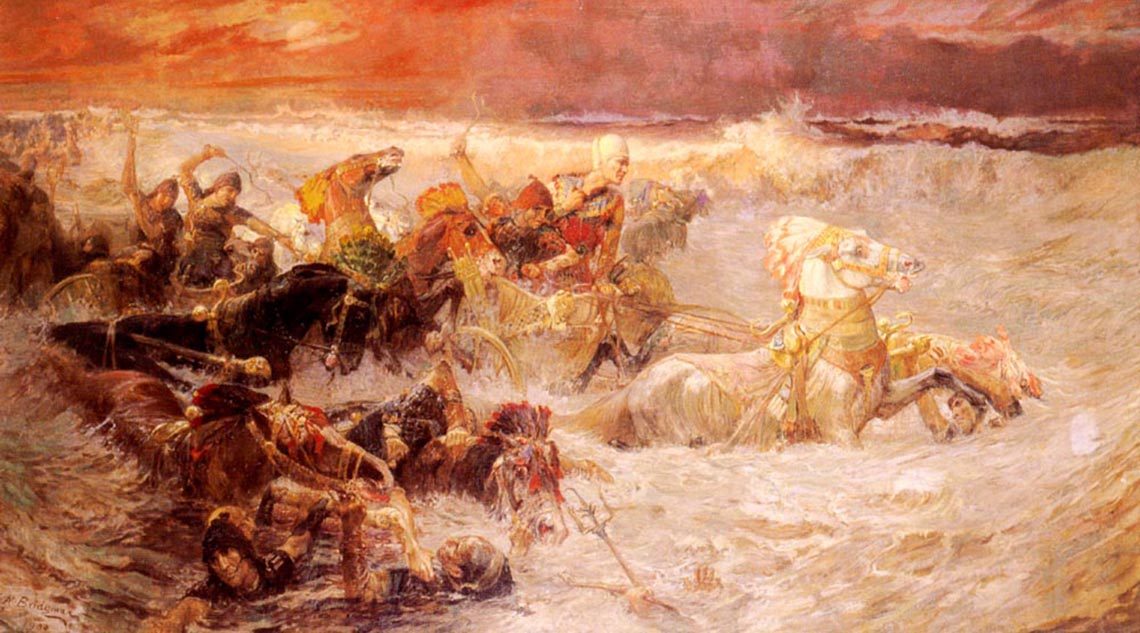By now, we have come to realize that nothing is included in the narrative by accident. That is to say, the inspired authors were meticulous in their composition. Names and numbers and incidents are included only if they matter. The daughters of Jethro (Reul and Jethro are two names for the same person), then, present us with the puzzle. Why tell us there were seven of them, and only give one of them a name?
You may say, “Well, the other six don’t matter.” If that is so, why mention them at all? The narrative would be just as accurate if it said that Moses met Zipporah at the well. If the other six don’t matter, then there is no need to mention them. Yes, they were there, but they play no further role in the narrative, and if they play no further role, there is no need to mention them. But the inspired author clearly thinks we need to know that there were seven of them. Why?
If you recall, before these seven daughters, there were five significant women named in the narrative of Moses: Shifrah and Puah, the midwives; Jochebed, Moses’ mother; Miriam, his sister; and Pharaoh’s daughter. If you add in these seven daughters of Jethro, you come to a grand total of 12. Again, the wit and wisdom of Leslie Hardin Freeman:
Twelve women in a row protect Moses and help his journey through birth, life, boyhood, and young adulthood in just the first two chapters of Exodus. What? Twelve tribes of Israel, twelve apostles of Jesus… yet this all-female cast of twelve is often overlooked. Shocking.[i]
So now we come to the final question: as a spiritual figure, whom does Jochebed match? We saw the parallels between Tamar and Solomon, and called them a match. Whose actions parallel those of Jochebed?
We’ve already mentioned that her construction of the ark for Moses makes her a match for Noah. But she does much more than merely deliver Moses through the waters. She cares for him, she nurtures him, she prepares him for life. As we’ve seen, she is the lead figure in a total of 12 women who protected and guided Moses through his journey. Exactly how long Jochebed nursed Moses we do not know. We know that he was 40 years old when he fled Egypt for Midian, that he spent 40 years in Midian, and that he spent the last 40 years of his life guiding Israel to the brink of the promised land.
The Bible says that God used to speak to Moses face to face, as a man speaks to his friend. What an amazing statement! And when we look at the life of Moses, the one chosen to be deliver Israel, we must remember the remarkable women involved in saving him—in delivering the deliverer. Without Jochebed, there is no Moses. Without Miriam to watch over him, there is no Moses. Without Pharaoh’s daughter who knowingly defies her father’s command and saves the Hebrew child, there is no Moses. Moses will deliver the children of Israel through the waters of the Red Sea. Moses is the Deliverer of Israel; Jochebed is main figure of those who deliver the Deliverer. And there we find the match for Jochebed and the other 11 women who helped and guided Moses. Moses himself!
Another small point, related to Moses and his generation. The story of Moses’ deliverance includes the deaths of countless Hebrew boys cast into the Nile. What a tragedy. But those deaths will be avenged in a signal fashion. When Moses delivers Israel through the Red Sea, Pharaoh commands his army to pursue the escaping Israelites. When the army charges into the dry sea bed, the water closes over them, and they drown. So the Hebrew boys drowned at Pharaoh’s command are matched by Egyptian boys—his army—drowned at Pharaoh’s command.
We have now finished our look at the first two examples of Bible women who seized the initiative, in both cases directly contrary to the wishes of men in authority. And we find that the biblical authors carefully constructed their narratives to demonstrate how the actions and outcomes of two women, Tamar and Jochebed, parallel those of Solomon and Moses respectively. The culture they lived in may have discounted their importance, but it is increasingly clear that the biblical authors, and more importantly God, did not.
When I began this study, I realized God had often heard the appeals of women. I did not realize the full significance biblical writers ascribed to these two women who appeared, on the surface, to be fairly minor characters. Tamar seemed an interruption, a distraction from the story of Joseph. Jochebed appears to be a footnote in the story of Moses. Yet both turned out to be major spiritual heroines. And now I wondered what other surprises awaited me.
Read other posts in the “Matriarchs and Prophets” series.
—
[i] Freeman, Lindsay Hardin (2014-09-07). Bible Women: All Their Words and Why They Matter (Kindle Locations 1254-1256). Forward Movement. Kindle Edition. 34










